#horse biology
Text
Today is Wet Beast Wednesday!
Today’s wet beast is: Pipefish
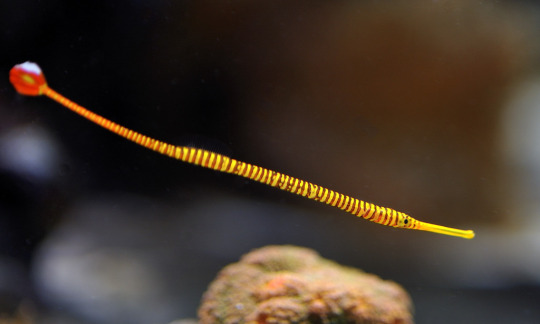
Olive’s wet beast fact: You’re probably thinking that these worm-on-a-string lookin ass creatures look like straightened seahorses. That’s bc they are part of the Syngnathidae family with Seahorses and Sea Dragons. Funky!
Stay tuned for more Wet Beast Wednesdays!
#pipefish#banded pipefish#syngnathidae#wet beast wednesday#fish#aquarium#sharks#marine biology#oceanposting#deep sea#sea creatures#ocean#sea horse#seahorse#fishblr#fishes#science#biology
8K notes
·
View notes
Text
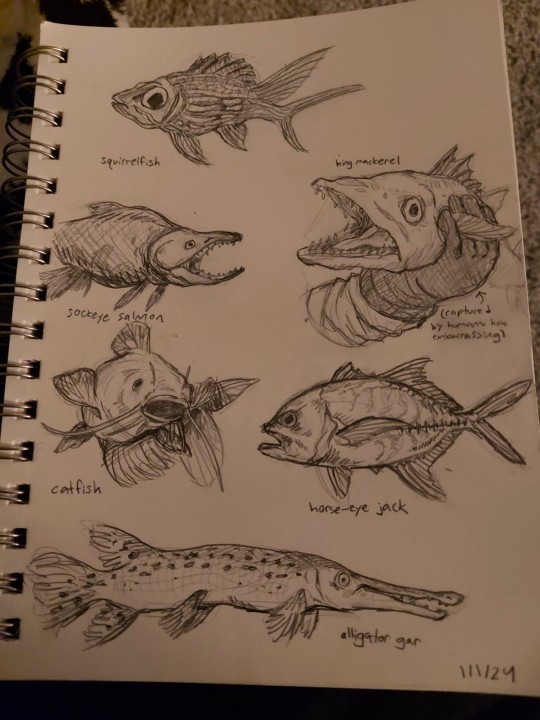
more fishies 😊
#fish#marine biology#fish art#squirrelfish#catfish#king mackerel#sockeye salmon#salmon#horse-eye jack#alligator gar#gar fish#traditional art#sketchbook#sketchbook page#sketchbook art#pencil sketch#illustration#azazel's art gallery
731 notes
·
View notes
Text
Taxonomy Tournament: Mammals
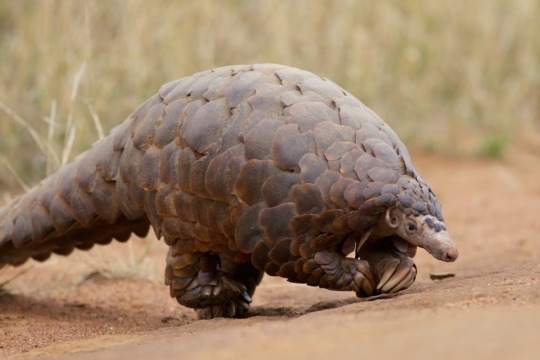
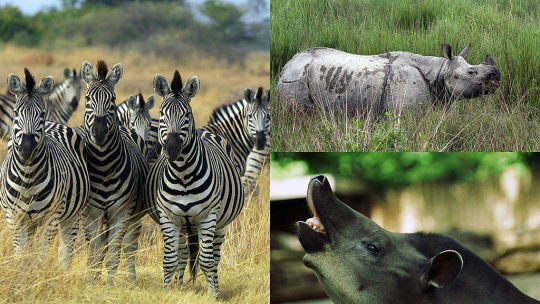
Pholidota. This order is made up of the pangolin, the only mammal to have keratin scales.
Perissodactyla. This order is also known as the odd-toed ungulates because they (mostly) have hooves and bear weight on one or three toes. It is made up of equines, rhinos, and tapirs.
#animals#biology#polls#poll tournament#zoology#pangolins#mammals#tetrapods#horses#donkeys#rhinos#tapirs#Pholidota#Perissodactyla#0x60v0x9f#animal tournament#Animal Tournament Round 1
329 notes
·
View notes
Text
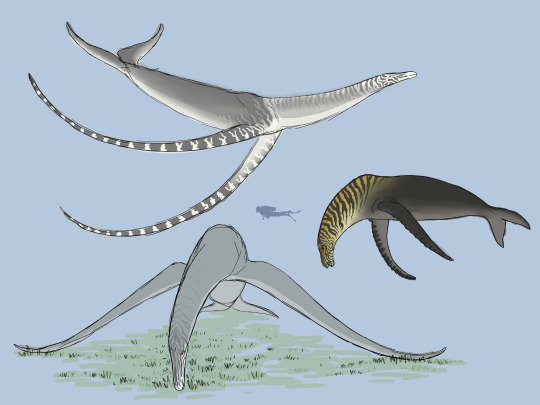
Some sketchy concept stuff that I'm posting because I liked it but couldn't be bothered to refine it into an actual artwork.
These submarine behemoths are the Mermares (Clade Euhippocampiformes), secondarily aquatic descendants of the domestic donkey. The group first appeared around 29 million years post-cataclysm, in the late Nerian stage of the Diluvian period. They evolved from an animal called the Seabra, a descendant of the Donkey which adapted to exploit a niche with, thus far, zero competition - that of a large marine herbivore.
On earth, marine ecosystems are notable for the distinct lack of vascular plant life, a condition caused by a number of factors - most notably the osmotic stress caused by the saltwater. Most photosynthesis is carried out by algae. On Spero, however, things are different. Because Spero's oceans were generated relatively recently, from extraterrestrial ice particles, there just hasn't been enough time for erosion and the water cycle to deposit dissolved minerals in the water. As a result, Spero's seas are made of freshwater - a much more tolerable condition for most plants, and thus the diversity of marine vascular plants is much, much higher than on earth. Also, due to the flatness of the flooded landscape and lack of any real tectonic features, enormous swathes of the seabed lie within the photic zone, less than 200 meters from the surface. Thus, endless expanses of marine grasslands - the "seagrass prairies" - extend from the shore, often for hundreds of miles before the water finally gets too deep for photosynthesis to occur.
All of this plant life is an extremely attractive prospect for herbivores, and it was likely what drew the ancestral Seabra to forage in shallow coastal meadows in the first place. But as the oceans got deeper and life adapted, the Seabra had to adapt in kind - their hind legs rotated backwards to act as a pair of propulsive flukes, their forelimbs developed into steering flippers, and their nostrils retreated to sit on their foreheads.
One notable feature of the Mermares is hyperphalangy, a condition where the fingers have too many bones. It's very common in large marine tetrapods in Earth's history - whales and dolphins, Ichthyosaurs, Plesiosaurs, and Mosasaurs all exhibited hypoerphalangy to some degree - and seems to be associated with the specialization of the limbs into flippers. We would expect to see similar patterns in marine lineages on Spero. What's unique about the Mermares, however, is the sheer number of extra phalanges in the finger; at least fifteen in the shorter-finned species, and more than thirty in the longest-finned forms. And because Mermares - being equids - only possess one digit per limb, the result is a single long chain of flat, squarish bones which, in some cases, can reach over forty feet long - the longest arms ever to exist.
These ridiculous appendages produce a lot of drag and are merely adequate for steering and stabilization. So why do the Mermares have them?
The answer is that they're weapons. And particularly devastating ones, at that.
Mermares use their flagellating flippers as bludgeons, against both predators and conspecifics. The flippers are connected to powerful neck muscles and can be swung forward with impressive force; combined with a well-timed twisting of the giant horse's torso, the huge flippers can impact hard enough to shatter bone and pulverize flesh. The flippers themselves do not escape unscathed, and older individuals often have scarred or mangled flipper-tips from numerous battles over the years; but it's a small price to pay for survival.
When not being used against their enemies, the flippers may be folded back against the sides of the animal to reduce drag, or used as props to keep the animal's belly up off the seabed when feeding. Mermares spend up to 18 hours per day grazing, using their long neck to crop aquatic grasses and other vegetation in a wide arc without moving their bodies and occasionally dipping up to the surface to breathe. Mermares are keystone species in the seagrass prairies; as hindgut fermenters, they are not as efficient at processing plant matter as ruminants like goats, and produce large amounts of nutrient-rich dung which acts as fertilizer for the meadows and helps keep the environment productive. The dung also acts as food for a variety of fish and invertebrates.
Let's look at some of the Mermare's diversity, shall we?
Drepanarion (center right)
One of the smaller Mermares, Drepanarion nonetheless grows to nearly 12 meters (39 feet) long. It is immediately recognizable by the bold black-and-yellow striping on the heads and necks of the stallions, and by the tall, narrow nuchal crest which extends from the withers and makes the stocky body look even more powerful. Unlike most other Mermares, which live in small groups of less than ten individuals, Drepanarion can be found in herds of over a hundred in the seagrass prairies of the Savanian (41 - 50 million years post-cataclysm). These nomadic throngs graze patches of seagrass nearly to the roots before moving on, giving the ecosystem time to regrow before returning in a few years' time. Drepanarion exhibits the most extreme sexual dimorphism of any Mermare, with stallions being both larger and more brightly coloured than mares; during the annual rut, males will fight each other in brutal bludgeoning matches to establish dominance and secure mates. To this end, they have some of the most extreme flipper anatomy of any Mermare; though not especially long (indeed, they have the shortest flippers of any derived genera), each phalanx bone has a protruding bony tubercle on the anterior edge which extends into a keratinous knob. These knobs both protect the flipper during combat and focus the force of the blow into a smaller area, dealing more damage.
Hipposeidon (bottom left)
First appearing in the early Imberian (50 million years post-cataclysm), Hipposeidon is the largest of all Mermares and, indeed, the largest animal ever to exist on Spero, with stallions regularly reaching over 24 meters (80 feet) long (mares are slightly smaller). Extremely large specimens may even reach 30 meters (100 feet), although this is rare. This ludicrous size - nearly rivaling even the mighty Blue Whale of Earth - is possible only due to the sheer abundance of its food. Hipposeidon appears at the height of the seagrass prairie's extent, and can pack away almost 900 kilograms (1900 pounds) of seagrass per day. This superlative food requirement has important consequences for Hipposeidon's behaviour; this animal is migratory. Seagrass prairies are extremely productive ecosystems, but nonetheless Spero is a seasonal world; as the summer growth gives way to the winter die-back, the greatest of the Mermares must migrate across the equator to seek out a continuous food source to fuel its immense bulk. In this way Hipposeidon experiences a perpetual summer, interrupted only by the biannual migration from north to south and back again. Female Hipposeidon are pregnant for about one year, timing the birth of the single large foal with arrival to the feeding grounds; the six-meter-long foal enjoys a long childhood nursing and playing in shallow summer waters, gathering strength before making the long swim across the barren tropical zone to pastures new.
Bathypegasus (top left)
The last and possibly the weirdest of the great Mermares, Bathypegasus is the only member of the clade which is not a grazer. Instead, it is a specialist feeder on pelagic, free-floating ferns. These ferns are a seasonal bounty, growing in huge numbers in the tropical summers of the late Imberian (60 million years post-cataclysm), where the planetary ring system shades out large portions of the planet for half the year. A close relative of Hipposeidon, Bathypegasus has left its ties to the seabed behind, becoming a fast, powerful swimmer which spends most of its life far above the sea floor. Its flippers have adapted to be even more ludicrously long - the longest forearms of any animal, ever, with each one measuring nearly 14 meters (45 feet) in length and each containing at least 35 individual bones. No longer used to prop the animal up off the seabed, these whiplike flippers are narrow and streamlined and can be whipped through the water at speeds of nearly 20 meters per second (that's over 40 mph) - the most extreme weaponry of any Mermare, and used to great effect against predators. Bathypegasus, like Hipposeidon, is migratory, following the blooms of pelagic ferns across Spero's oceans. Thanks to this midwater diet it is the only genus of Mermare to survive past the mid-Imberian extinction, when rising sea levels and steepening coastal slopes caused the seagrass prairies to disappear. Bathypegasus finally died out in the Ultimoxerian stage, around 75 million years post-cataclysm, the last and weirdest of the giant marine horses.
#spec bio#spec evo#speculative biology#speculative evolution#Vicis Aeternum#Spero#seed world#equid#donkey#they're like if a whale and a horse had a baby and that baby was somehow also a diplodocus
844 notes
·
View notes
Text

The Biology and Riding of Thoma
Thoma, also known as Thomases (singular: Thomas), are the primary animal used on No Man's Land for transportation, meat, eggs, feathers and oil. The meat can be eaten fresh or dried into jerky, and thoma meat, fried in thoma oil and sprinkled with worm dust, is a popular street food. These massive birds were genetically engineered early on in No Man's Land history and are well-suited for the desert, making them easy to raise and care for. Plus, they're easy to ride.
Biology
Thoma are a combination of several bird species, genetically similar to Emu and Ostriches, but with the stature of much larger birds such as the extinct Terror birds (Phorusrhacids), standing near 5-6 feet tall at the withers. Their bright blue plumage and loosely-packed feathers helps dissipate heat. They have long eyelashes to keep out dust, and they have a second eyelid that protect the cornea from grit and bright UV light. This does, however, decrease visibility, making them more prone to tripping over rocks.
Thoma have a long, feathery neck that helps balance them at faster speeds along with the heavy, muscled keel. The keel is engineered to be similar to that of a broiler chicken, as their vestigial wings are useless except for thoma mating displays. Under the throat is a vocal sac, which can be used to transmit low rumbles over long distances. Most thoma, however, prefer to chirp at a frequency easily heard by their human caretakers and riders. They have long, powerful legs, capable of galloping up to 40 iles an hour, and a kick that can disembowel an attacker or rip into a worm's exoskeleton. The three talons on their feet need to be trimmed by an experienced farrier every 4-8 weeks, depending on a bird's mileage.
Thoma eat a diet of seeds, grains, worms, and (when available) fruits and vegetables. Like many birds before them, they will sometimes ingest small rocks and pebbles to help grind their food in the gizzard. The thin, short beak is perfect for pecking at the ground, and when provoked, they will also peck at an enemy. Thoma are, however, generally good-natured creatures, as they have been bred to be.
Riding
Thoma are easy-going and very trainable with a nice floating gait, making them great mounts for humans on No Man's Land. Like many birds, they can move their legs independently from the movement of the spine, which allows the use of saddles. Most saddles are similar to old Western saddles, and are optimized for comfort and long journeys. However, in the bigger cities, some people may ride Thoma in competitions, typically using more English-style tack for greater control of the bird. typically two straps are used to secure the saddle - a breastplate to keep it from sliding back, and a girth/breeching to prevent it from sliding forward. The strong legs are left free to move as needed, giving the bird great flexibility.
The tack on the head often consists of a bridle, a canvas covering on the neck, and a headpiece with blinders. Headpieces and bridles may vary, as the design has been through several different iterations, but the general idea is to generate gentle pressure on the beak when the reins are pulled and to protect the eyes. The headpiece often has blinders and a screen over the eyes, allowing the bird to travel without using the second eyelid. This allows the thomas to move with greater agility, picking its way around desert rocks even at high speeds. The canvas across the neck protects the feathers from the reins and keeps the bird cool. Some headpieces also include a protective metal beak piece that can be used as a weapon.
Thoma make excellent mounts as they are docile, easy to train, have very few natural predators, little fear of humans, and can live on worms alone in a pinch. They do require some water, not having ability to store much themselves, but their ability to dissipate heat and the ways in which the tack can help keep them cool minimizes the need. There are a few wild herds, but most thoma live on ranches or in stables, marked with a leg band or brand.
237 notes
·
View notes
Text

So, I admittedly don't know much about anatomy, and definitely need some help here. But aren't these teeth weirdly... predator-like...?
326 notes
·
View notes
Text

Hey yall!! Introducing one of my favorite pieces of the last few years, Sea Oddity: a repeating pattern of hand drawn and watercolor rendered jellyfish, horseshoe crabs, nudibranchs, and sea monkeys. (repeating watermark added just to be safe <3)
I uploaded it to Spoonflower last year as part of the assignment I made it for, and now it's publicly available to purchase on there as well as on my brand new Society6 shop! If you want a little sea critter print or some fabric to make a sea critter sewing project, this might be the perfect one!
#my art#artists on tumblr#marine biology#repeating pattern#spoonflower#horseshoe crab#nudibranch#nudibranchs#sea creatures#jellyfish#blue lagoon jellyfish#spotted jellyfish#princess jellyfish#horse shoe crab#hiii here's something original!#I finally got around to making a society6 lol if that tells u abt my financial situation#the spoonflower pattern has actually been available for a while! I got hounded into making it publicly available#but purchases are still kinda rare and I only make a few cents whenever someone DOES buy a yard or 2 of fabric so#I figured getting this out there before the holidays might be a good idea
170 notes
·
View notes
Text
The main reason why horseshoe crabs are endangered is because horse girls keep killing them to make horseshoes. It takes 4 whole crabs to shoe a single horse, it’s high time we end this barbaric practice once and for all
#Nessie on drugs#r/196#196#r/196archive#/r/196#rule#meme#memes#shitpost#shitposting#biology#horses#horse#science#horseshoe crab#equestrian#equine
75 notes
·
View notes
Photo

390 notes
·
View notes
Text

†Yukon horse (Equus lambei)
Art credit: Rinaldino
Thousands of years ago, a variety of wild horse species lived across the northern hemisphere. Fossils of E. lambei are found, as the name suggests, in the Canadian Yukon Territory, just east of Alaska. At the time this wild horse lived, the Yukon was part of a large landmass known as the Bering land bridge, which connected Asia and North America. This land was exposed when much of the ocean was locked into giant ice sheets during the ice age, and today the higher sea levels have separated the two continents. The Yukon horse lived in a cold steppe environment alongside bison, mammoths, and reindeer. This and other North American horse species went extinct about 10,000 years ago, and the Americas completely lacked horses until the introduction of the domestic horse several hundred years ago.
#markhors-menagerie#animal facts#animals#biology#fun facts#ungulates#odd toed ungulates#horse#horses#Yukon horse#Bering land bridge#palaeontology#prehistoric animals
94 notes
·
View notes
Text


Hippocampus ingens or Pacific Seahorses
These are the largest known species of Seahorse, and because of that, they're also known as the Giant Seahorse. They grow to be 36 cm long (14 in). Like most seahorses, this species has a prehensile tail, allowing them to anchor onto structures like plants.
#seahorse#sea horse#pacific seahorse#sea horses#seahorses#animals#cute animals#animal gifs#icthyology#science#biology#ecology#zoology#nature#wildlife#earth#conservation#ocean#oceans#sea#sea life#sea animals#sea creatures#animal facts#fun facts#giant seahorse#marine biology#marine bio#hippocampus ingens#marine life
447 notes
·
View notes
Text
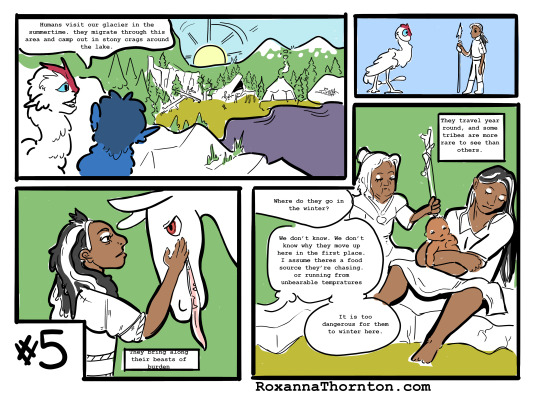
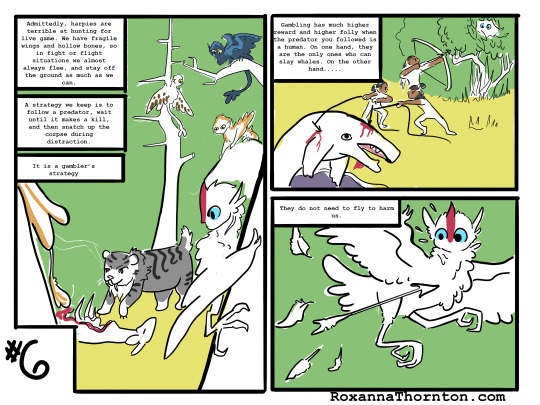
More worldbuilding for harpy world summer time.
Humans here are nomads, and they visit the glacier during summer time. Humans and harpies have a lot of miscommunications with each other, since their visits are brief, and view each other with myths and mysticism. Some myths may be true, It is said that humans taught harpies to make fire, some even say humans bring summer themselves. Reverence level varies per individual.
Humans in this realm have medium brown skin, and salt-and-pepper hair regardless of age. They also have white around their eyelids as a genetic trait. I do not intend this setting to be any continent that we are familiar with, but my intention is that these are a people so ancient that their traits have been lost to our history. (I also considered them having stripes, but they're bundled up a lot, so it wouldn't have function.) Also their horses are not horses. They are cloven hooved sighthounds. They are wolves who evolved to be sheep.
The white harpy is Raah, Apollo's elder half sister. She's very curious.
#my art#digital art#digital painting#apollo#harpy#animal death#world building#worldbuilding#fantasy art#comic#my comic#original comic#oc#whale#tiger#horse#speculative fiction#speculative biology#speculative evolution#artists on tumblr#digital artist
48 notes
·
View notes
Text

Felt a strange compulsion take me last night and created this. A horse, but with the body of a panther.
Also a version without the background

#Ember's art#creature design#spec bio#speculative biology#art#digital art#artist on tumblr#horse#panther#brown#can't decide if they'd be omnivorous scavengers#or pack hunters
98 notes
·
View notes
Text
Cryptotaxonomy Tournament: Equines
Note: these creatures do not actually exist. The following descriptions are facetious
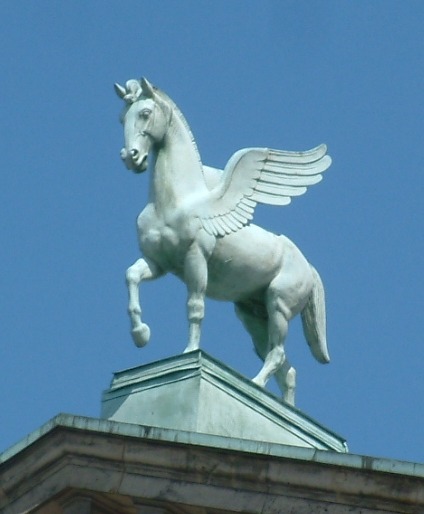

Pegasus. This equine species is made up of Pegasi, which have wings capable of self-powered flight. It works because of magic or something.
Unicornis. This equine species is made up of Unicorns, which have a single horn on their head, and are capable of telekenesis and healing powers.
#animals#biology#polls#poll tournament#cryptozoology#cryptids#mythology#pegasus#horse#unicorn#Pegasus#Unicornis#0x2v0x5#Cryptotaxonomy Tournament#Cryptotaxonomy Tournament Round 1
115 notes
·
View notes
Text



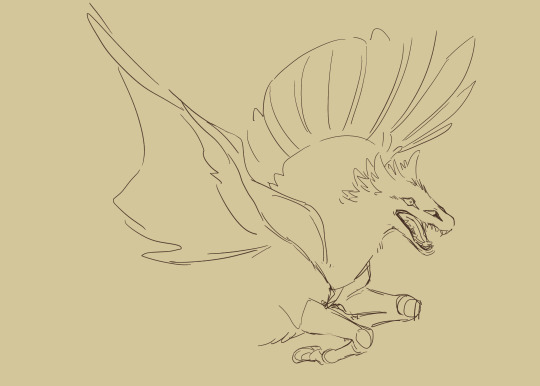
pegasus art of varying levels of coherency
#the top one was gonna be part of a comic but i dont think i'll ever#get farther than 4 panels in so idc anymore#hence the boxes#they were gonna be for text#ooooooops!#the second one is just a vibe piece. cadaver's domain is very foggy and misty and ethereal feeling#and the pegasi are just fucking Huge#third one was uuuHhh expressions#the file name for it is also 'fuck u just say to me' so theres that#and the third one is hehe wing horse#my art#promethea#speculative biology#pegasus
80 notes
·
View notes
Text

Horsefied a Uniima in pursuit of Discord shenanigans, they lend themselfes to the unicorn shape too well, check @yellosnacc if you want to see the originalTM Uniima shape~
#creature#creature design#alien species#xenobiology#fanart#speculative evolution#speculative biology#spec bio#spec evo#horse#how hungry#shitpost
51 notes
·
View notes